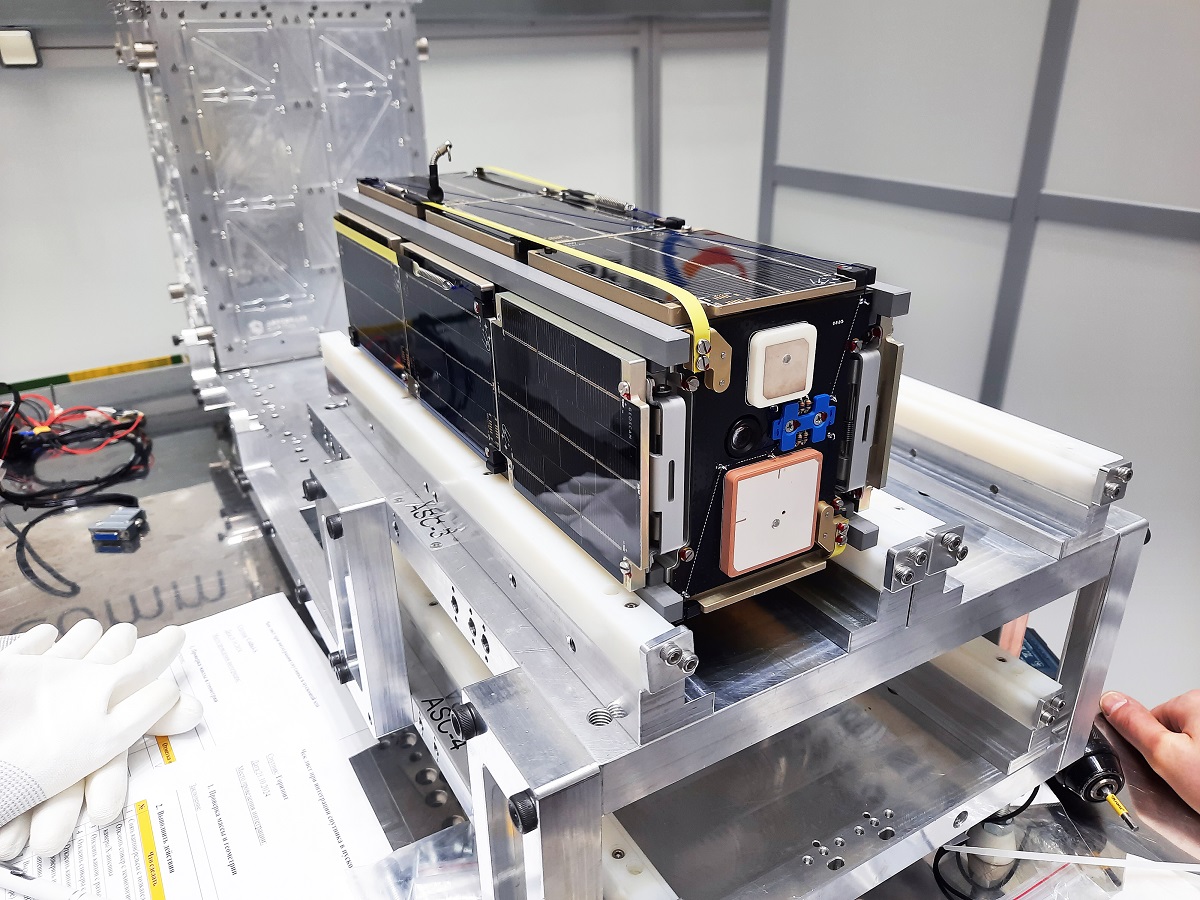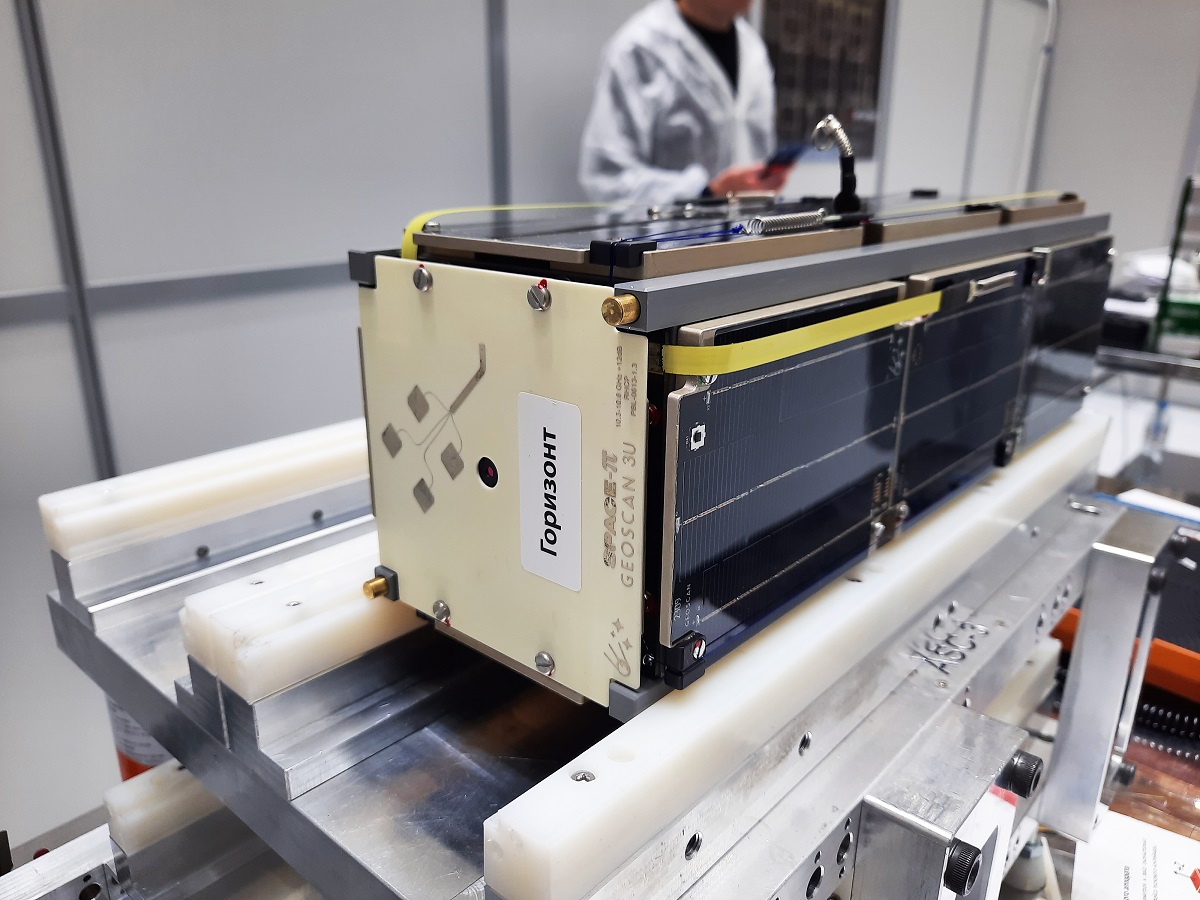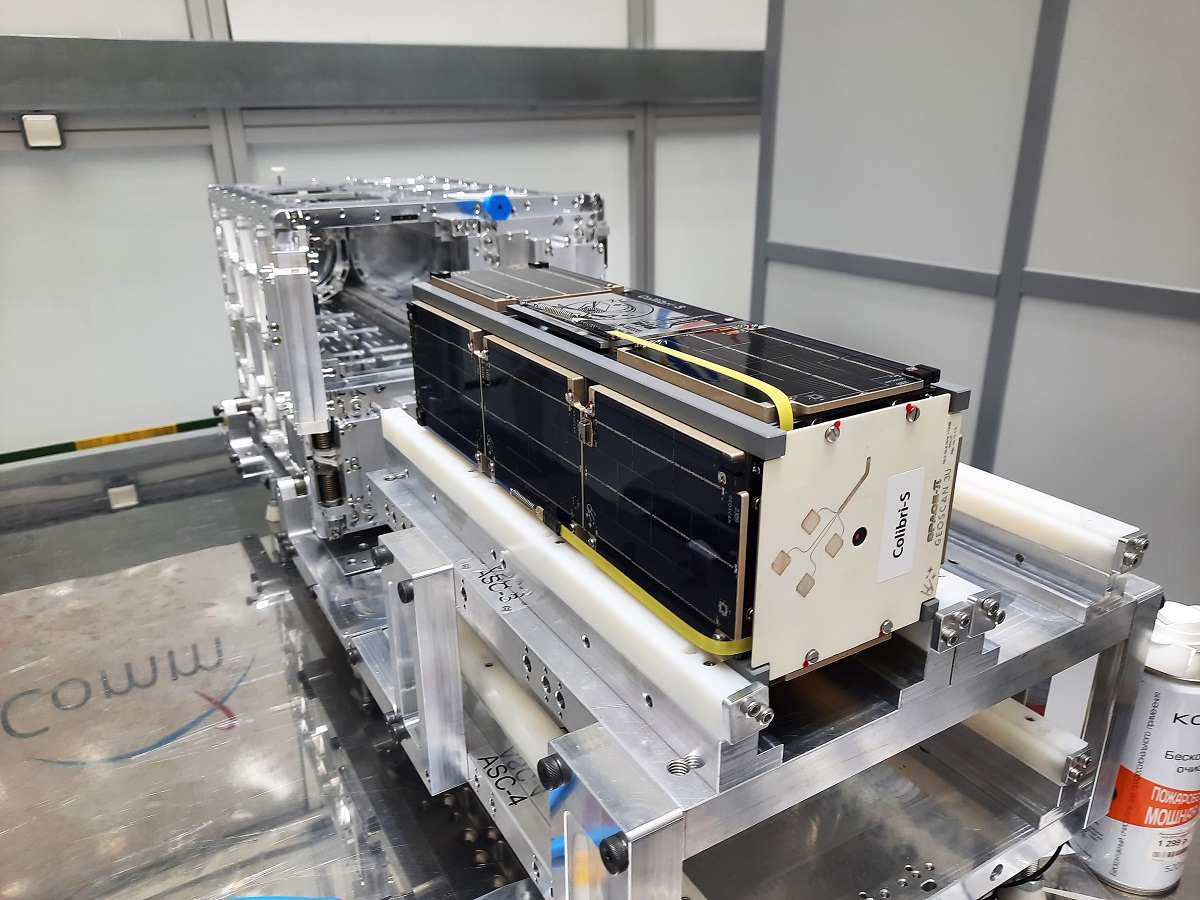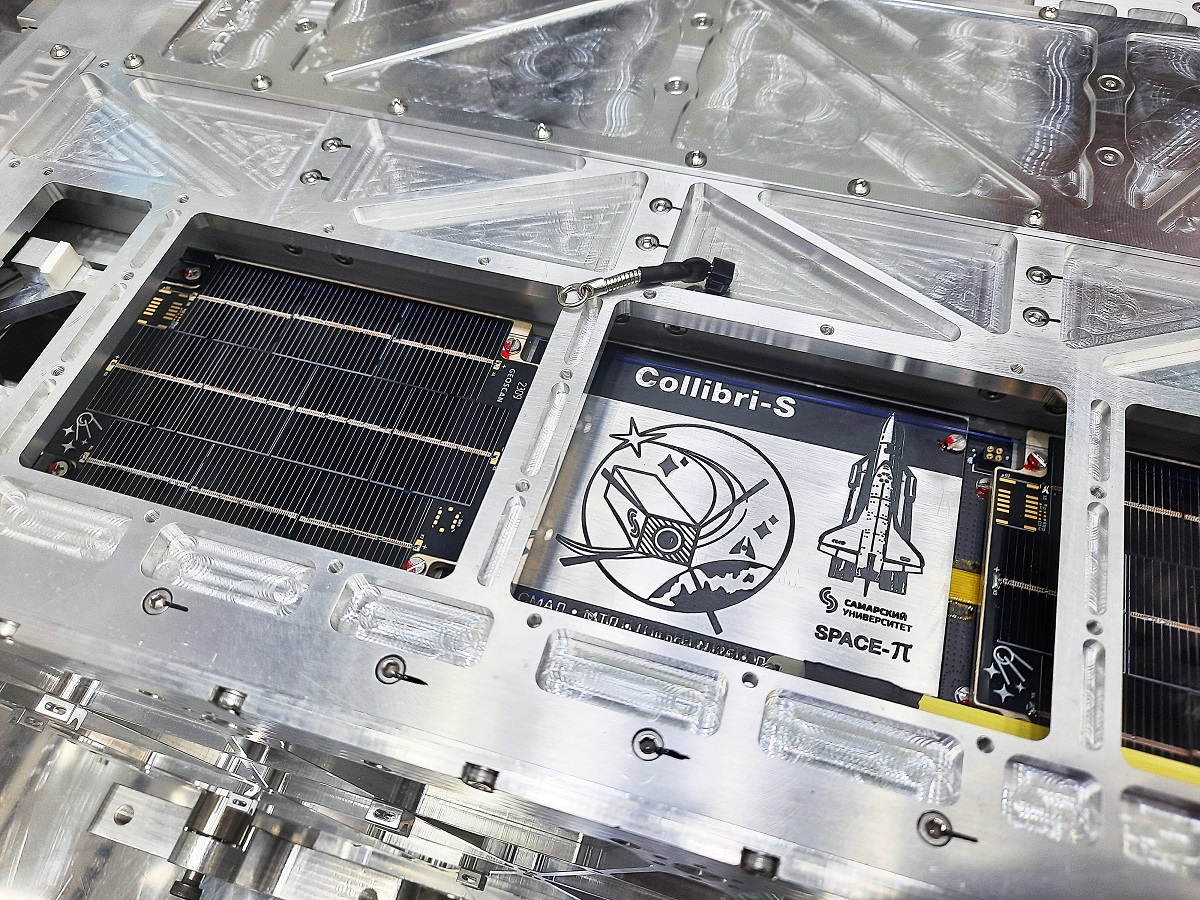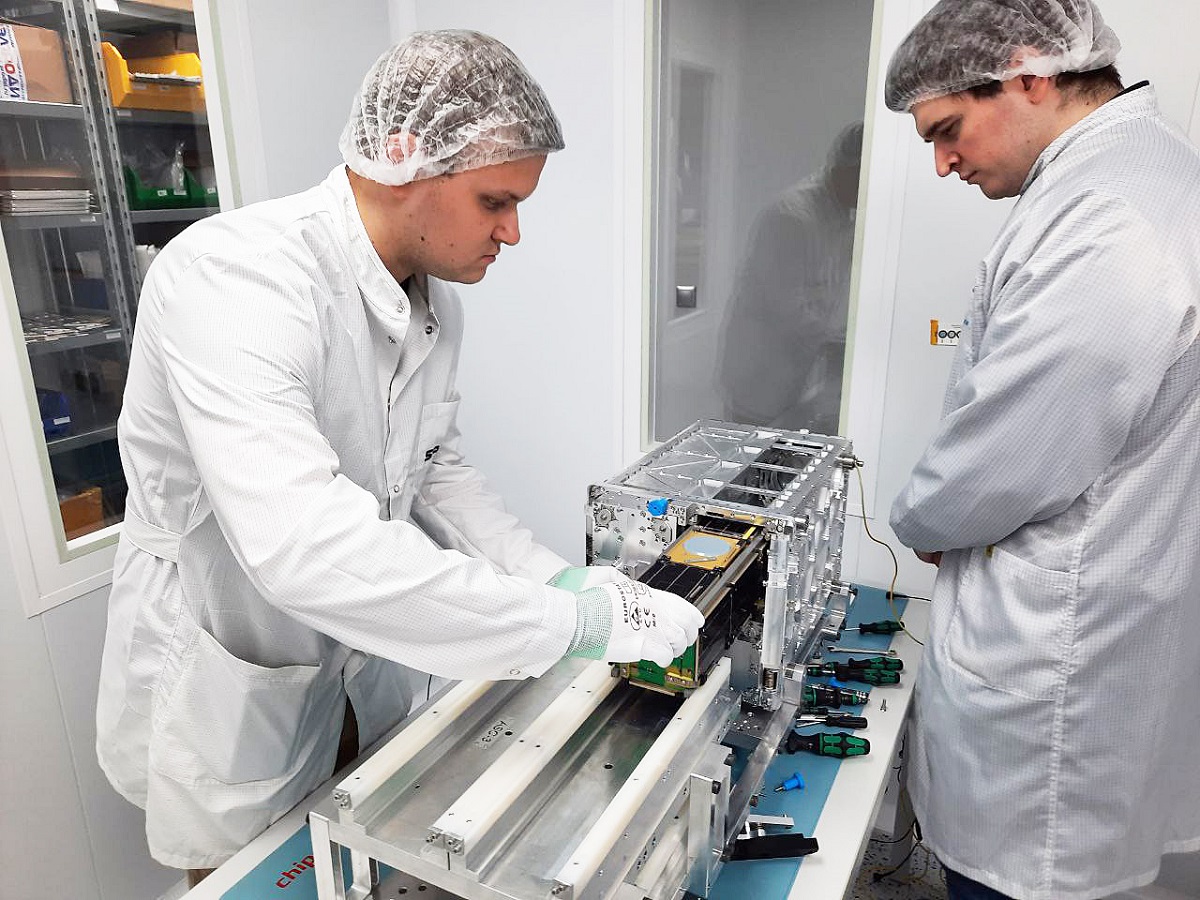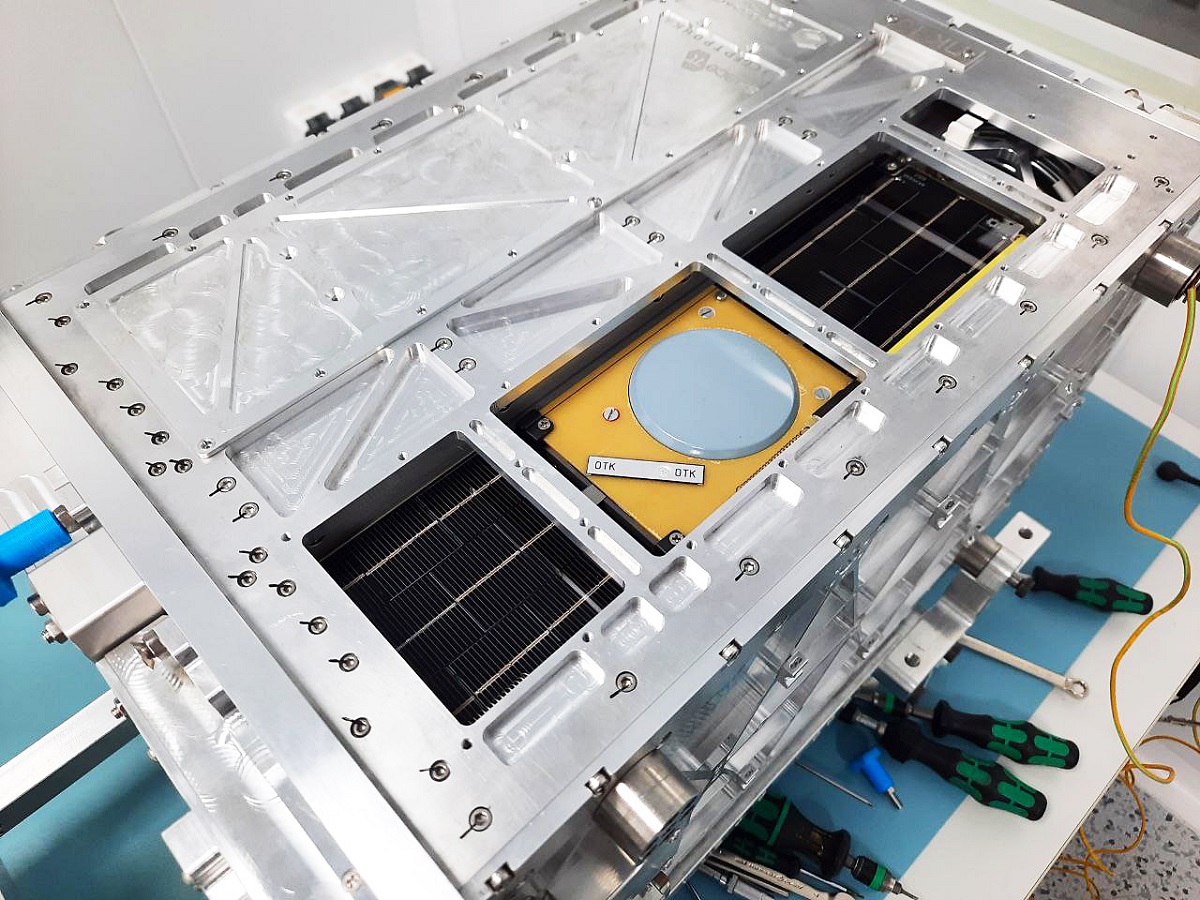This November, five new educational satellites designed by Geoscan specialists are set to launch into space. Built on the advanced Geoscan 3U platform, these satellites mark a new milestone in the ongoing Space-π project. Currently, all small spacecraft have successfully been integrated with their launch containers, fully prepared for launch together with the Ionosfera-M spacecraft No. 1 and No. 2, and with the Fregat launcher.
Three satellites — TUSUR GO, Vizard-ion, and RTU MIREA1 — were integrated in Balashikha within Aerospace Capital’s clean room, while two others, Horizon and Colibri-S, completed integration at the Vostochny Cosmodrome, the launch point for this mission. Each satellite has its unique payload and specific mission objectives. Notably, two of them will work in tandem to explore inter-satellite communication, an essential goal within the Space-π project framework.
- The TUSUR GO satellite, developed for Tomsk State University of Control Systems and Radioelectronics, is intended for flight testing a satellite communication device, including monitoring data transmission to ground terminals via other spacecraft.
- RTU MIREA1, produced by MIREA Russian Technological University, is equipped with a GNSS receiver and an optical visible-range camera, enabling it to study cloud formation on Earth. Additionally, the transceiver module will provide an inter-satellite communication link with the TUSUR GO satellite to support data exchange experiments.
- Vizard-ion, created for the MSU-STANDART company, is designed to test the VERA plasma propulsion system and a GLONASS/GPS signal receiver. These technologies will enable radio occultation experiments to study the ionosphere, conducted in collaboration with the RTU MIREA1 CubeSat.
- The Colibri-S satellite, developed by the S. P. Korolev Samara National Research University, carries a hyper spectrometer for Earth observation. It will capture hyperspectral images of the Earth’s surface for remote sensing applications.
- Horizon, a CubeSat built by the Baltic State Technical University “Voenmekh,” includes innovative student-led developments: a deployable solar panel module to study degradation in space, an electronic component testing module, a mechanical orientation unit powered by electric motors, and a payload control system.
Before integrating the CubeSats, Geoscan specialists conducted ground tests with a platform prototype to make sure the core systems operate correctly. For this purpose, an operator established communication with the satellite, successfully transmitted commands and received data.
“We conducted a number of pre-flight tests with an engineering mock-up of the satellite platform using radio communication: a complete check of the spacecraft’s main systems ensuring its operation in orbit - communication, orientation in space, power supply, on-board computer, and others. During testing, communication link was successfully established with the satellite model, allowing critical commands necessary for its operation to be transmitted and correctly acknowledged. Additionally, we transmitted an image capture command to the satellite model, followed by a request to send the photo back via radio link. The result was a complete image from the satellite camera, with no data loss, even in a noisy radio environment. We are now actively preparing for the launch in November and subsequent satellite operations in orbit,” commented Geoscan satellite operator Egor Meltsov.
The next communication session will take place once the small spacecraft reach orbit and approach the company’s ground control station. Additionally, the first telemetry data from the CubeSats will be accessible to anyone with reception stations within the SONIKS network.


